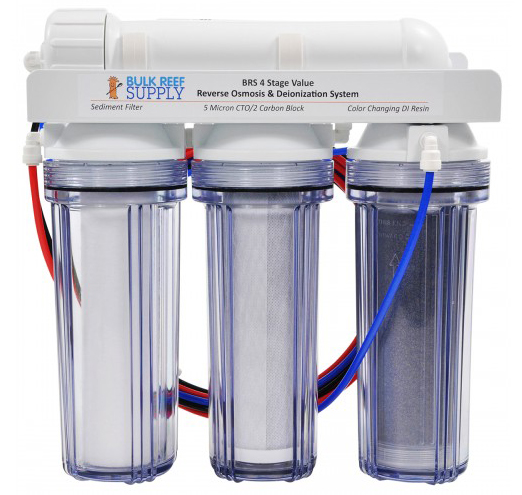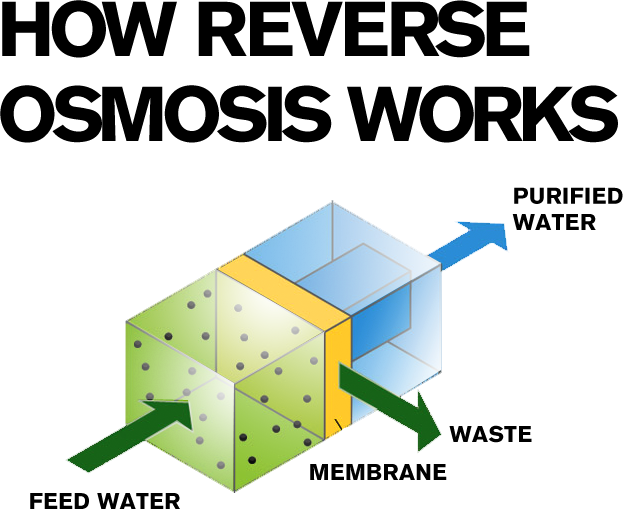Reverse Osmosis And Deionization RO/DI
Reverse Osmosis and Deionization RO/DI

Reverse Osmosis and Deionization is a standard in water purification for use in reef keeping. It allows for 100% H, 2, and O. There are tap water conditioners out there, but adding chemicals may not be for you. When you use RO/DI water you minimize the risk of nuisance algae or diatoms. You may have seen sinks with a skinny faucet off to the side. This is actually an RO faucet most of the time, however the kind we use for reef tanks and the ones designed for drinking have one major difference that makes trying to use them a terrible experience. Home units are limited to the size of their storage container, usually 1-3 gallons…try filling up a six foot tank with one and you may just lose your mind. Instead, use one intended for large quantities. You can find one to suit just about all your needs, but first you should have a good understanding of how they work.
RO/DI systems usually compose of four main parts, each linked together in a chain. In a way they are like canister filters for a freshwater tank, but with individual canisters for each filter. Some may have more filters, this just means there are doubles of some stages. Other units have less chambers, which means there is something removes from the unit. Some instances may call for more filtration while other water supplies may be more clean. First in line is the Sediment Block. This filters out most of the larger sediments in the water, allowing the finer filters up ahead to last longer. Next in line is the Carbon Block, which can filter sediment down to ½ micron. It absorbs DOCs, and it deactivates the chlorine in the water. This is a very important part of the system, as chlorine will ruin the actual RO membrane, which is next in line.

Image via www.wholehomereverseosmosis.com
The RO membrane is a permeable film that must be under pressure to function properly. When the water is passing through this stage the membrane is filtering out most of the leftover molecules that are heavier than the water molecules. The water that makes it through that goes through the DI resin. This is where the last of the ion exchange takes place and the pure water is finally on its way out the system into one of your trusty water containers and the waste water gets diverted into your drain. If your system is less than four stage, make sure the carbon stage is still a part of your specific unit or it will not remove chlorine. This is very important.
If you are always looking for ways to “Go Green” you can use the waste water for so many good things. Routing your waste line to your pond will act as an auto top off, which is what the clean end is doing for your reef! You can drink the waste, cook with it, and use it in your washing machine. RO/DI does not add anything at all to the water that goes through, it simply extracts things from the water and diverts it elsewhere. I suppose a more marketable name would make more people know about them. “Reverse Osmosis” and “Deionization” sound like dance moves from the 80’s, not something you would do to water!

Leave a Reply
You must be logged in to post a comment.